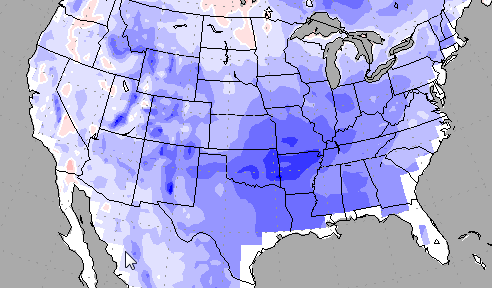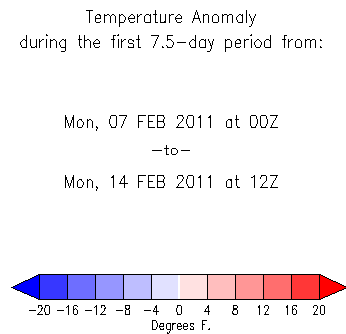“Snow has two simple ingredients: cold and moisture. Warmer air collects moisture like a sponge until it hits a patch of cold air. When temperatures dip below freezing, a lot of moisture creates a lot of snow.”

http://www.esrl.noaa.gov/psd/map/images/fnl/sfctmp_01.fnl.gif
Elaborating on his comments – warm, moist -30C air sweeps down from the Arctic and hits the much colder 0C air in Texas. This causes record snow to fall in locations that used to be warm before global warming made them cold.
http://wxmaps.org/pix/temp1.html




Al Gore has a serious neurosis.
someone tell Microsoft to leave well enough alone…..
Their new and improved is not working——-again
umm, isn’t it the case the colder the air the less moisture it holds?
Si
The only air that could be warmer and holding more moisture, would be coming up from the south/oceans, and SST’s are below normal.
it is warmcold air
I get confused….
….warmcold, wetdry, flooddrought, snowrain, etc
No wonder we need climate scientists to sort it out for us………
Gore is a total buffoon.
If that warm -30C arctic air hits the 1 million degree F rocks, which are just below the surface of the earth, then all hell breaks loose.
lol, so snow is expected tomorrow in SE Kansas, then a low of 6 F, more the next day with a low of -7 F (-22 C). Exactly where on the temp anomaly map is the warm air coming from?
Warmcold,……………… latest alarmist bs theory easily refuted by observation of recent weather events.
…theory easily refuted…..
Well, yes, for thinking beings. But when Al agreed to the hybridization process that made him part bear /part pig, his logic gene was trimmed away. The doctors said it was a tiny, useless one already, so they didn’t see the harm.
It is supposed to get quite mild across the US next week, maybe 60 or 70 degrees (F) in places that have had a relentless winter.
That will no doubt induce the alarmists to come out of their holes in force, howling about how warm it is.
On the other hand, places like Hudson Bay and Nunavet are going to be very cold, even by their standards. The “warming Arctic” will be very quickly be forgotten by the very same people who were obsessing about it when those places were “warm” in December.
So instead of “warmcold”, the weather will be “coldwarm”.
We culd use a thaw, since we had none in january…. but for us, “mild” is going to be average… which, yes, will seem mild, but is only average.
The big difference in Texas is that it was just a lot colder than normal. The El Paso electric power plant that went down was not designed for cold weather (according to their maintenance manager) and had frozen and leaking pipes all over the place. It is time to insulate all those pipes because winters have been getting colder in Texas the past couple of years (at least more really cold days/nights than we are used to).
Alternatively:
High-latitude areas such as Hudson Bay lose ice early in the summer and absorb more heat, thus delaying the re-freeze of these areas in the winter, leaving them well above normal temperatures.
The presence of such relatively warm regions disrupts the normal polar vortex (i.e. causes a meander in the jet stream), allowing frigid Arctic air to spill downwards into lower latitudes. While several degrees warmer than historically “normal” Arctic air, this is nevertheless well below freezing.
The northerly blast of Arctic air across the country comes into contact with the previously warm, moist air at lower latitudes: air that holds more moisture than it used to due to global warming.
The combination of moister than usual air being brought into contact with the unusually cold blasts from the North is what leads to record snowfalls.